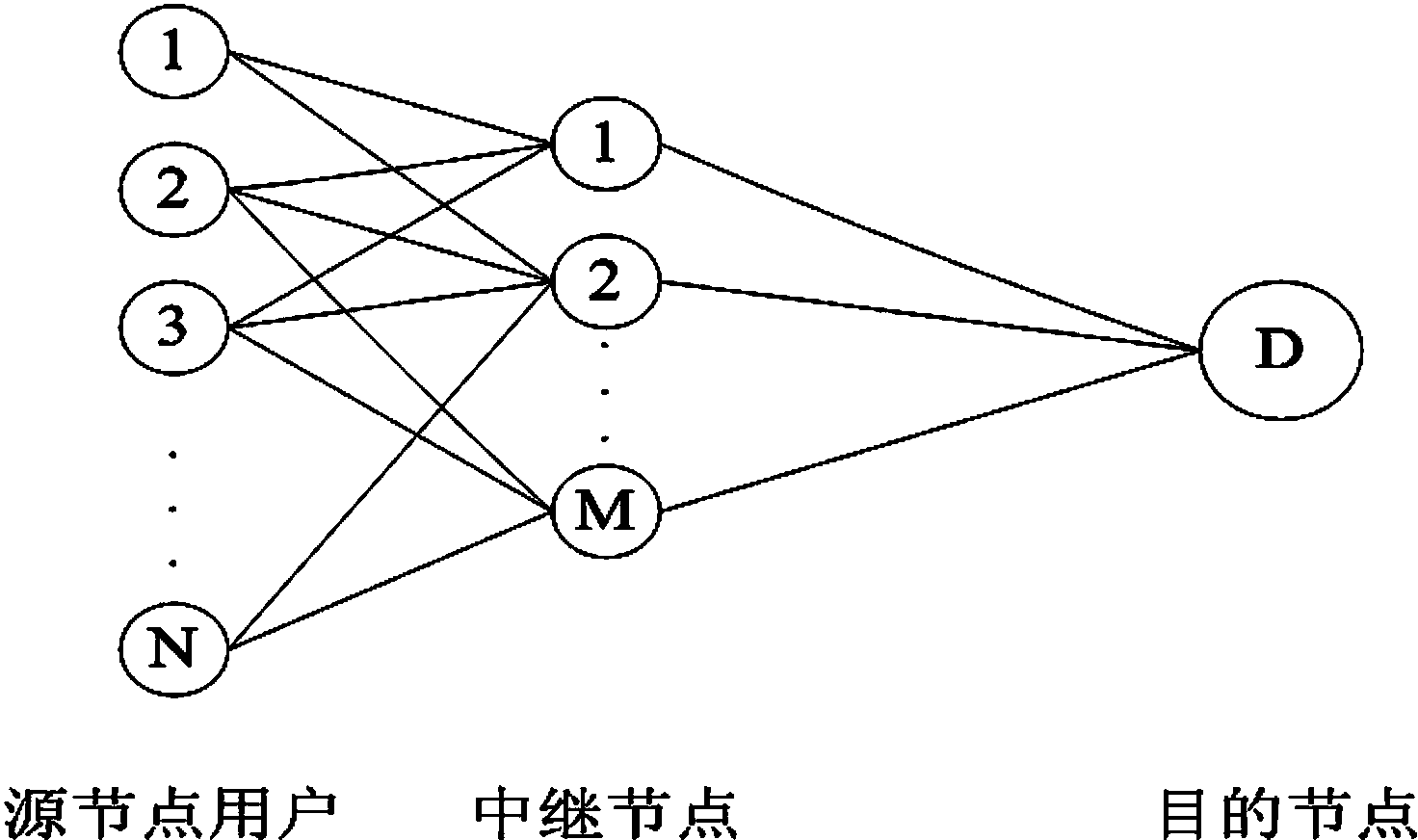Polling grouping scheduling method in multi-source multi-relay cooperation network
A multi-source multi-relay, cooperative network technology, applied in the field of node selection and user scheduling scheme based on round-robin group scheduling, distributed space-time coding technology, and can solve problems such as poor results
- Summary
- Abstract
- Description
- Claims
- Application Information
AI Technical Summary
Problems solved by technology
Method used
Image
Examples
Embodiment Construction
[0033] The specific implementation of the present invention will be described in detail below mainly in conjunction with the accompanying drawings.
[0034] The relay end adopts the AF scheme, and the load balancing relay grouping scheme based on round-robin group scheduling is as follows: define the set of relay nodes in the system as V, select K relay nodes to transmit information at the same time in each time slot, that is, from choose different relay nodes users form a relay node scheduling group set . The selection is grouped in a round-robin manner. set up for collection The index number in , that is, when =1, the selected trunk group is Group 1 in , and so on. set up , , is the source node After the first The sum of the signal-to-noise ratios that can be achieved at the destination after the group relay node transmits
[0035]
[0036] For the user from the source node to relay node The channel parameters of as a relay node to the d...
PUM
 Login to View More
Login to View More Abstract
Description
Claims
Application Information
 Login to View More
Login to View More - R&D
- Intellectual Property
- Life Sciences
- Materials
- Tech Scout
- Unparalleled Data Quality
- Higher Quality Content
- 60% Fewer Hallucinations
Browse by: Latest US Patents, China's latest patents, Technical Efficacy Thesaurus, Application Domain, Technology Topic, Popular Technical Reports.
© 2025 PatSnap. All rights reserved.Legal|Privacy policy|Modern Slavery Act Transparency Statement|Sitemap|About US| Contact US: help@patsnap.com



